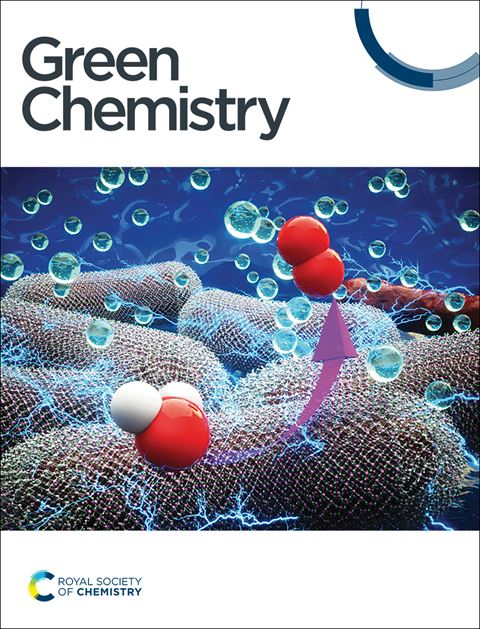On the use of propylene carbonate and dimethyl carbonate as green solvents in organic electrosynthesis†
IF 9.3
1区 化学
Q1 CHEMISTRY, MULTIDISCIPLINARY
引用次数: 0
Abstract
Electroorganic syntheses are often carried out in polar aprotic solvents such as DMF, acetonitrile, or dichloromethane, which exhibit excellent electrochemical properties, but are highly problematic in terms of sustainability. The propylene carbonate–dimethyl carbonate (PC–DMC) system is a promising alternative with enhanced environmental, health, and safety parameters, and has already found numerous applications in electrochemical energy storage systems. Herein, we present a systematic study on the PC–DMC system as reaction medium for organic electrosyntheses, spanning from the characterization of electrolyte properties to representative test reactions on a preparative scale. Anodic synthesis of diaryliodonium salts, cathodic reduction of ketones, and TEMPO-mediated alcohol oxidations serve as use cases, showing that yields are comparable to the ones obtained in conventional solvents. An interesting feature is the possibility for tuning the physicochemical properties of the reaction medium by varying the PC–DMC ratio, which was shown to impact the catalytic rate of TEMPO-mediated alcohol oxidations and the yield of diaryl iodonium synthesis.
论碳酸丙烯酯和碳酸二甲酯作为绿色溶剂在有机电合成中的应用†。
本文章由计算机程序翻译,如有差异,请以英文原文为准。
求助全文
约1分钟内获得全文
求助全文
来源期刊

Green Chemistry
化学-化学综合
CiteScore
16.10
自引率
7.10%
发文量
677
审稿时长
1.4 months
期刊介绍:
Green Chemistry is a journal that provides a unique forum for the publication of innovative research on the development of alternative green and sustainable technologies. The scope of Green Chemistry is based on the definition proposed by Anastas and Warner (Green Chemistry: Theory and Practice, P T Anastas and J C Warner, Oxford University Press, Oxford, 1998), which defines green chemistry as the utilisation of a set of principles that reduces or eliminates the use or generation of hazardous substances in the design, manufacture and application of chemical products. Green Chemistry aims to reduce the environmental impact of the chemical enterprise by developing a technology base that is inherently non-toxic to living things and the environment. The journal welcomes submissions on all aspects of research relating to this endeavor and publishes original and significant cutting-edge research that is likely to be of wide general appeal. For a work to be published, it must present a significant advance in green chemistry, including a comparison with existing methods and a demonstration of advantages over those methods.
 求助内容:
求助内容: 应助结果提醒方式:
应助结果提醒方式:


